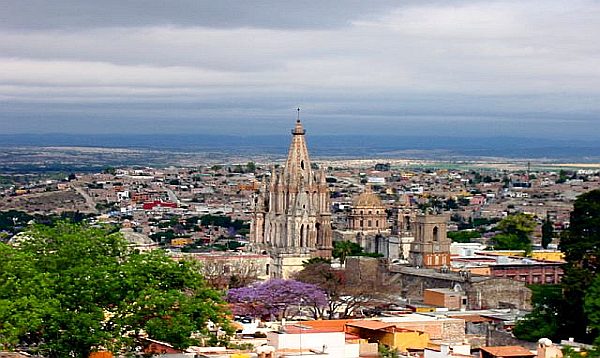San Miguel De Allende, Guanajuato – Once upon a time San Miguel was a colorful, sleepy little Mexican town in central Mexico. Not anymore.
With the fame the city has acquired over the past four years, since UNESCO (The United Nations Educational, Scientific, and Cultural Organization) defined it as a World Heritage site, vehicle traffic has grown almost beyond management.
"We are in a crisis situation," says Adolfo Cervantes, director of Municipal Traffic and Public Transportation in the small municipality not far from the nation's capital. "Every weekend there are huge bottlenecks caused not just by excess traffic, but also because the original - and still beautiful - city was designed for horse and donkey transit. City forefathers never foresaw the monumental growth and built a federal road outside of town."
The road serves to connect Querétaro and Celaya to nearby Dolores Hidalgo.
Nowadays, the "federal road" is smack in the middle of town and the source of a daily headache both for drivers and authorities. Accidents galore happen there.
The worst came three weeks ago when a child ran across the road and was killed by a runaway driver. "We had accidents there but then, death appears," says Cervantes.
This prompted a five-hour road blockade by irate neighbors that forced the intervention of Mayor Lucy Nuñez, as well as state and federal authorities.
The bottom line of the problem, Cervantes explains, is that the federal road is part of the incomplete Bicentenary Bridge project. A four-lane bridge feeds traffic into the problematic two-lane road.
The day after the protest, authorities put in place the "speed reducers," commonly known as "topes," that now back traffic up for more than half a mile on both sides of the two-lane road. The situation gets worse on weekends.
For instance, last weekend the Atotonilco Shrine held its annual fiestas celebration. "At least 60 buses carrying pilgrims showed up," Cervantes says, "not counting hundreds of cars. This year we saw more worshipers than in the past."
Adding to the visitors, says Cervantes, is the fact that more people are moving into San Miguel. "For the past three years there has been at least a couple of new vehicles coming to town every day due to the good publicity the town has gotten."
Cervantes acknowledges that there is no solution in sight for the traffic jams, and predicts that none will come during his tenure, as the current administration steps down on October 10th.However, "there has to be a solution for traffic sooner or later, it’s got to come."


